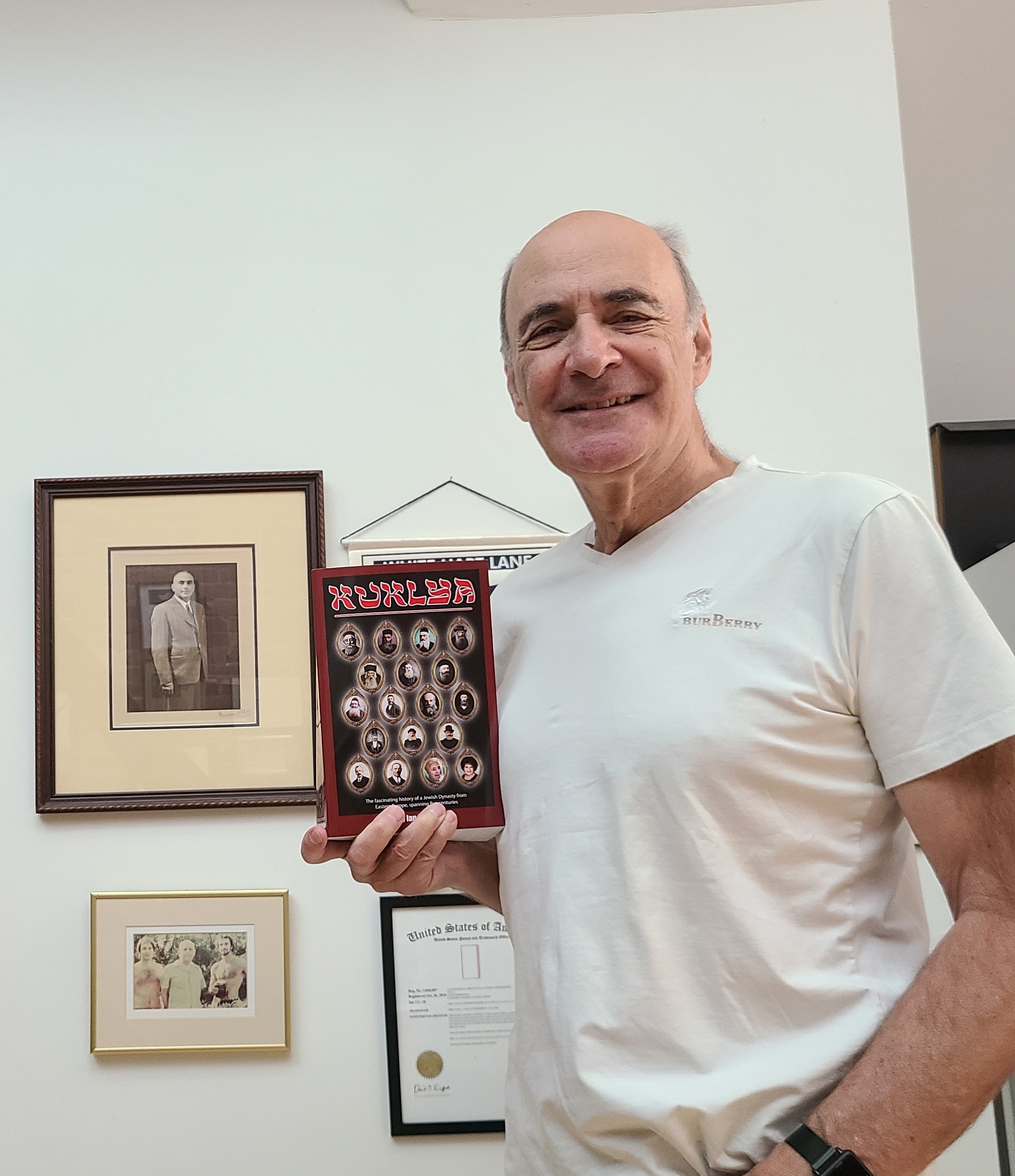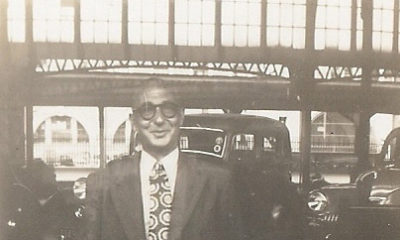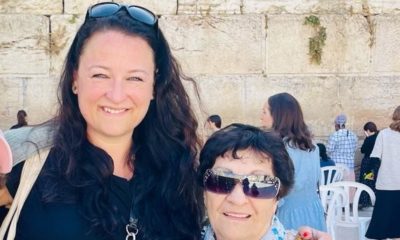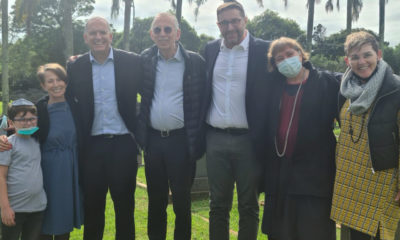
Featured Item

Largest Jewish family tree in world has famous names
Published
2 years agoon
They have almost 79 000 ancestors and descendants and count among their relatives Barbra Streisand, Billy Crystal, Bob Dylan, Bette Midler, Gene Wilder, Kirk and Michael Douglas, Sigmund Freud, and Amy Winehouse.
“We believe we have the largest documented Jewish family tree, which has been more than 25 years in the making,” says Ralph Cilevitz. About 60 family members gathered for a reunion in New York City on 9 August.
“Some of our lineage is familiar such as Joffe, Levine, Cohen, Kagan, and mine – Cilevic,” says Cilevitz, writing from Toronto, Canada. “I’m originally from Vryheid via Durban and Johannesburg. There are many, many rabbis [in the family], all the way back to Rabbi Rashi to the present-day chief rabbi of the Commonwealth, Rabbi Mirvis, who is my cousin.
“The family originated in the tiny town of Kukliai/Kuklya in Lithuania (with a population of about 200) around 1520, then emigrated to the area of Rezekne in Latvia in 1591,” says Cilevitz. “We have published a Kuklya encyclopaedia of more than 2 000 pages and a family tree of 1 000 pages, copies of which are now housed at Yad Vashem.”
This will be the fifth family reunion and the first in North America. The first two were held in England – with more than 500 descendants attending – then one in Rezekne, Latvia, and one in Haifa, Israel. “At a guess, there are about 60 Kuklya-related descendants living in Toronto, and 200 to 300 in South Africa. We’re hoping to have the next reunion in South Africa in a few years’ time,” says Cilevitz.
His father, David Cilevitz, emigrated from Latvia to South Africa in 1930, “because of a fur coat, but that’s another story. He changed his name from the Latvian ‘Cilevic’ to ‘Cilevitz’. Most of his family were killed in 1941 by the local town police in collaboration with the advancing German army.
“He ended up living in Vryheid, Natal, marrying Bessie Mirvis (cousin of Rabbi Mirvis). They had two children, Rita and Harold, and shortly afterwards, Bessie died. David remarried my mother, Sarah Goldman and soon after, I was born. Sarah’s parents came from Kovno, Lithuania.”
Cilevitz described growing up in Vryheid as idyllic. “The Jewish population was about 40 families at its peak, yet we had a shul and a permanent rabbi. From 1960 onwards, Jewish children left to continue their education, and moved to Durban, Cape Town, or Johannesburg. They married and had children. The older Vryheid Jews then followed and the town’s Jewish population disappeared. The ark, bimah, and wooden seating were re-located to the Durban Jewish Club.”
Cilevitz immigrated to Toronto in 1979. “I have three children who all live nearby. Almost all my family emigrated, and are now living in Toronto or Los Angeles. I studied electronics at Natal and Wits Technikon, and had a career as an industrial inventor.”
He was his family’s historian for about 30 years, “but only had about 100 ancestors and descendants on our tree. Two years ago, I did a DNA test through a company called MyHeritage, and found a match of a second cousin in Pittsburgh in the United States. After contacting him, he told me of another family historian living in England who was our cousin and had been researching his family tree for 25 years. After comparing notes and sharing trees, my family tree grew from 100 to 78 225. I was connected to the main family tree in at least six ways. I had the opportunity to find many lost pieces of the family jigsaw puzzle.”
He has been the main researcher on his paternal side and is now a contributor to the full Kuklya tree. “More and more data is being released online worldwide, which was for many decades found only by visiting archives. It’s a time-consuming but rewarding hobby.”
Anyone inside or outside the family can participate. “For generations, information was passed along by mouth or sometimes a few scribbled notes, but all these small details help in establishing researchable data. For example, I looked for my family for three decades under the name ‘Cilevitz’. Then by chance I found a relative’s birth certificate which showed his birth name was ‘Cilevic’. Once I started searching with this name, I found dozens.
“It was then that I realised that name spelling isn’t important, it’s the way it’s pronounced. In Eastern Europe our ancestors spoke Yiddish, German, or Russian. The spelling of surnames varied as the names were pronounced, so when people emigrated, there were times when one sibling’s surname was spelled Shapiro while the other was spelled Shapira. Yet they are the same family. Our family historian, Ian Levine, has published a 2 000-page encyclopaedia of the family and a novel, based on the Kuklya history.”
For Cilevitz, the project is important because “most of my father’s family were killed in the Holocaust, so for decades, I thought our family was very small. I always looked for family as I felt a need to belong.”
Tracking is done through people that might remember their ancestors. “This is the tricky part. Many people remember their ‘Granny Sadie’, but her birth name was probably Sorah, so without that knowledge, the search becomes more difficult. I’ve found that about 80% of people I contact are keen to learn more.”
Their first reunion in England had 400 family members attend. The second, also in England, had more than 500 attendees. The third one in the Latvian town of Rezekne, where the family story began, had about 100 attendees from all parts of the world. The fourth was in Haifa, Israel, with 150 attendees. The current reunion was organised quickly, and there were about 60 attendees.
Asked what people should do if they think they may be part of this family tree, Cilewitz says, “We have many fairly common names. Our main branch is Joffe. We also have Levine, Shapiro, Cohen, Kagen, Katz, etc. Our tree is very strong from the Lithuanian and Latvian areas and also America because that’s where the focus has been. Now, it’s my job to add the South African connections. If people have the names of their parents, grandparents, or great-grandparents, they can email me the names and I can check our database. But I must stress that for many South African families, their history goes back only to perhaps 1875. I’m trying to establish connections between them and our tree.” He can be emailed at ralphc@gwsergo.com.
“I would absolutely recommend genealogy as a hobby and sometimes a career,” he says. “If you enjoy learning about history, this is one way to do that and as a side-benefit, learn about your ancestors. For many South African Jews, their family history is quite short. Genealogy is an opportunity to go further back in the family and discover who they were, where they lived, and what they did. In a small way, looking forward, they are remembered forever.”











Janice Crampton
Jan 30, 2024 at 1:48 am
I was wondering, about a ancestor John Levins. He was in Ireland where he met one of my Great Grandmother’s. Her name was Anna Elisa Speirs they were married in Ireland. After they were married they came to Canada. Somewhere close to Owen Sound Ontario.